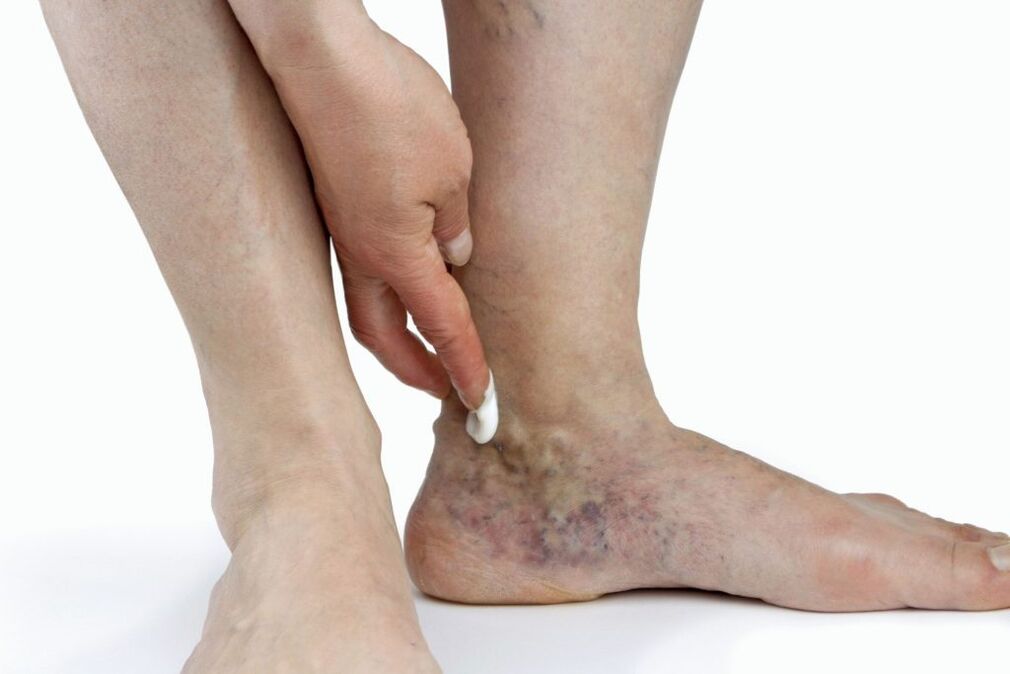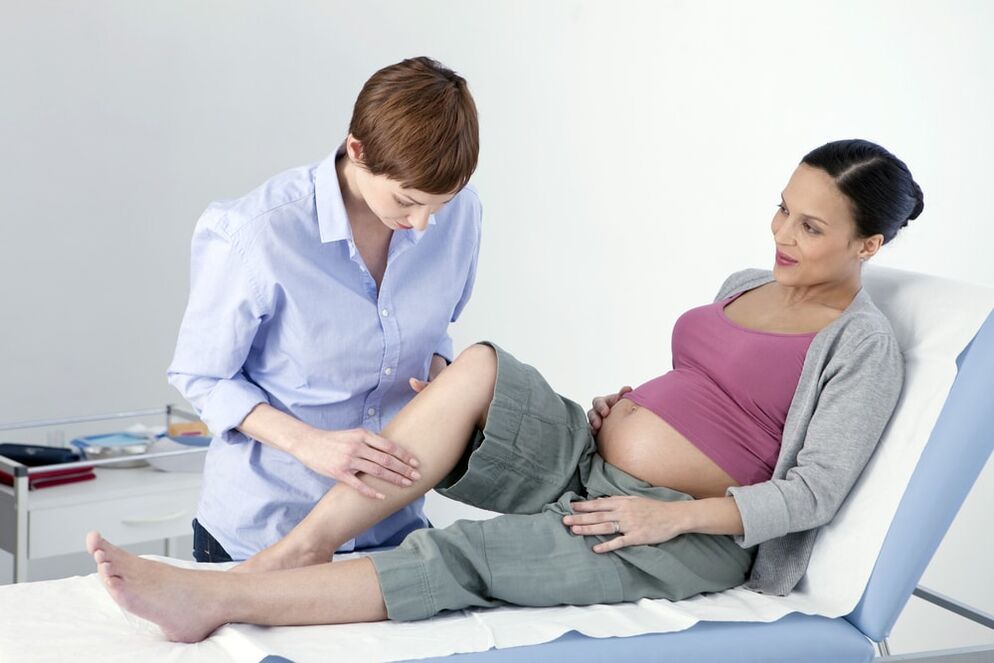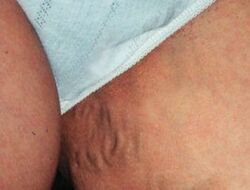
A less aesthetic disease is varicose veins, which manifests itself in the expansion of superficial venous vessels, a network that can be seen through the skin.With this disease, blood circulation through these vessels is disrupted, which can cause insufficient oxygen supply and removal of carbon dioxide.The symptoms are pronounced, so it is necessary to treat them in time.It is better to avoid this disease altogether through prevention.Often, treatment for varicose veins involves surgery.
Why do varicose veins occur?There are reasons that are often found in the lives of many people:
- Metabolic disorders.
- Professions where a person is always in a standing position (salesperson, waiter, etc.).
- Bad habits (smoking and alcohol) that have a negative effect on the condition of blood vessels.
- Endocrine diseases.
- Abuse of red pepper in food.
The reason for the development of varicose veins
Doctors are less and less inclined to believe that varicose veins are a hereditary disease.This is not always the case.Scientists note more other factors that often cause the disease: lifestyle, hormone levels and nutrition.
Impaired metabolism is one of the causes of varicose veins.It leads to obesity, which is the result of a sedentary lifestyle and poor diet, which is very common today.People are increasingly eating highly processed foods, abandoning plant foods.
Also, professions that force a person to stand for a long time, or sit for a long time, or carry heavy loads, or make sudden movements, put a lot of pressure on the veins.All this leads to the development of varicose veins over time.
- Long flights or transfers affect the condition of the veins, which is often observed in half of men.
- Women often develop varicose veins in the inguinal veins due to wearing tight pants.They also develop varicose veins on the lower legs if they often walk a lot in high heels or uncomfortable soles.
Pregnancy is also a factor in the development of varicose veins, especially if there is a history of rheumatoid arthritis or osteoporosis.
Other causes of varicose veins are:
- Deep vein thrombosis.
- Prostate adenoma.
- Cough.
- Persistent constipation.
- Surgery using anesthesia.
How to recognize varicose veins?
The first sign of varicose veins is the appearance of a blue vein pattern (mesh) on the surface of the skin.It usually appears on the thighs, in places where cellulite is located - fat metabolism is impaired, which puts pressure on the veins.
The second sign of varicose veins is swelling of the soft tissues of the legs.When diagnosing this disease, it is distinguished from kidney urolithiasis and cardiovascular system failure.
The more varicose veins develop, the stronger the pain in the calf muscles becomes.The pain is dull or acute, usually getting worse at lunchtime after a certain load during the day.
Someone complains about:
- Heavy on the legs.
- Trophic changes in the leg area.
- Night cramps.
On external examination, grids or stars can be seen, especially if the person is standing.If the patient takes a lying position, then the external manifestations of varicose veins may not be visible.Swelling usually subsides after an overnight rest.
Stage of varicose veins
Varicose veins are progressive and go through the following stages:
- The first is vein swelling, structural heterogeneity, vein hardening, node formation and thrombophlebitis.
- The second is fatigue, irritation, fatigue, heaviness in the legs.Deterioration of health, insomnia and memory loss.Complaints of night cramps appeared.For a long time, the skin cannot return to its previous shape after removing the outer clothing due to swelling.
- The third is trophic changes in the lower leg area.The skin becomes brown, dry, cracked, lifeless.Development of dermatitis with characteristic rash and itching.The swelling can now be located anywhere on the leg.The feeling of heaviness is reminiscent of muscle swelling.Any stress leads to rapid fatigue, which causes depression, insomnia, and weakness.
- The fourth is the level of development of complications in the form of inflammation of the vein wall, bleeding or the occurrence of trophic ulcers.

Varicose veins during pregnancy
If a woman has a tendency to develop varicose veins or the first signs have already appeared before pregnancy, then during pregnancy this disease will manifest itself in full force.Typically, 35% of women experience varicose veins during their first pregnancy, 50% during their second and 75% during their third.
Varicose veins are explained by the fact that blood enters the lower part of the leg, but its outflow becomes difficult.This leads to blood stagnation, causing the venous vessels to dilate and become visible.If a woman is not treated, there may be a risk of blood clots, which will cause the death of mother and baby.
Other causes of varicose veins during pregnancy are:
- Hormonal changes.
- Enlargement of the uterus and its pressure on the vessels.
- Increased blood volume.
- Individual characteristics.
Pathology can also appear in the anus or external labia.
Pelvic varicose veins
Varicose veins can develop not only in the legs, but also in the pelvic area.Most often this disease develops in women.It is diagnosed using three-dimensional ultrasound, where you can see small pelvic dilatation veins, as well as inflammatory processes in the uterus, ovaries and bladder.
but also in the pelvic area.Most often this disease develops in women.It is diagnosed using three-dimensional ultrasound, where you can see small pelvic dilatation veins, as well as inflammatory processes in the uterus, ovaries and bladder.
Symptoms for pelvic varicose veins are similar to varicose veins in the legs.Aches and pains are felt in the lower abdomen.The cause is often pregnancy, pathology in the pelvis, difficult childbirth.Other factors are:
- Always carry the child in your arms.
- Sedentary lifestyle.
- Taking oral contraceptives.
- Congenital regression of the venous wall.
How are varicose veins treated?
Conservative treatment is only allowed if there are contraindications for surgery or in the early stages of varicose veins, when pathological changes have not yet occurred.Here it is used:
- Bandage.
- Compression stockings.
- Constant changes in posture.
- Elevate your legs so they can rest.
- Avoid poorly ventilated areas with high temperatures.
- Eliminate large amounts of fluid and salt from the diet.
- Taking diuretics.
- Venoprotectors.
- Nonsteroidal anti-inflammatory drugs.
- Exercise therapy for uncomplicated varicose veins: bathing, swimming, water aerobics.
- Ointment.
- Hirudotherapy.
Operation for varicose veins
Tumescent anesthesia (use of local anesthetic) is part of the surgical procedure.This step is necessary if pathological changes have already begun.
Miniphlebectomy is an operation using local anesthesia - small punctures are made on the surface of the skin directly into the vein.
Another type of operation is to remove the affected vein using a short scraper.
Endoscopic vein surgery is another type of surgery that uses an endoscopic machine to identify the affected area of the vein.
Prevention and prognosis for varicose veins
Varicose veins can be prevented or stopped in their development.To do this, it is necessary to follow preventive measures that provide a favorable prognosis:
- Stop bad habits.
- Wear compression garments.
- Massage legs, thighs and back.
- Exercise therapy.
- Relief from stress.
- Maintain personal foot hygiene.
- Eliminates constipation.
The most effective method is to change your daily routine.You should eliminate high physical activity and get plenty of rest.You can also use traditional medicine recipes.


















